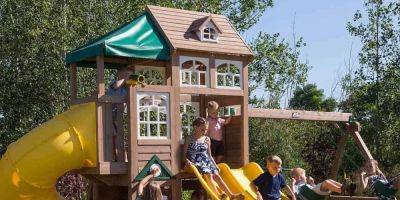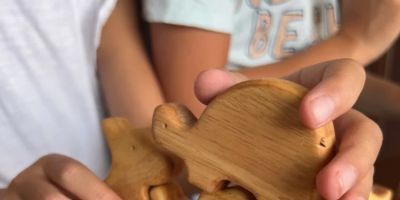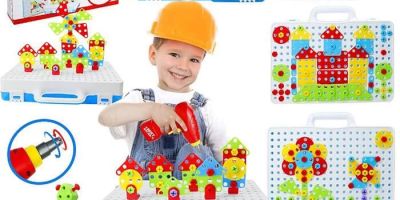Best Toy Animals for Educational Play: Fostering Learning Through Fun
- Why Toy Animals Are Important for Educational Play
- The Benefits of Toy Animals for Learning
- Types of Toy Animals for Educational Play
- How to Incorporate Toy Animals into Play for Learning
- Real-Life Examples of Educational Play with Toy Animals
- How to Choose the Best Toy Animals for Educational Play
1. Why Toy Animals Are Important for Educational Play
Toy animals have long been cherished as educational tools that promote imaginative play and creativity. From farm animals to wild creatures, these toys provide children with the opportunity to engage in pretend play while learning about the natural world. The versatility of toy animals makes them invaluable in early childhood education, allowing children to develop cognitive, social, and emotional skills while having fun.
What makes toy animals so beneficial is that they encourage children to explore new concepts and expand their imaginations. As children play with animals, they learn about animal behaviors, habitats, and the relationships between species. Whether using toy animals to reenact scenes from nature documentaries or building a zoo with their toys, children gain valuable knowledge about the world around them.
In addition to being educational, toy animals also help children understand concepts like empathy, responsibility, and care. When children "take care" of their toy animals, they learn about nurturing behaviors, developing a sense of empathy as they pretend to feed, shelter, and care for their miniature animals.
2. The Benefits of Toy Animals for Learning
Using toy animals for educational play offers numerous developmental benefits for children. Here are some of the key advantages of incorporating toy animals into playtime:
- Improved Cognitive Development: Playing with toy animals can help children understand complex concepts like animal classification, habitats, and even basic biology. Through imaginative play, children learn about different species, their behaviors, and their environments.
- Enhanced Language Skills: Toy animals are great for promoting language development. As children engage in pretend play, they often name their animals, describe what they are doing, and create stories around their animals. This kind of verbal engagement boosts vocabulary, storytelling skills, and narrative abilities.
- Fostering Creativity and Imagination: Toy animals offer endless opportunities for creative exploration. Children can build entire worlds and scenarios using their toy animals, from creating animal families to staging wild adventures. This fosters creativity and imagination, both of which are critical for cognitive development.
- Encouraging Social Interaction: When children play together with toy animals, they develop social skills such as cooperation, sharing, and taking turns. Collaborative play teaches children how to negotiate and work together toward common goals.
- Empathy and Emotional Growth: Playing with toy animals allows children to engage in nurturing behaviors, such as feeding and caring for their toys. This fosters empathy, helping children better understand emotions and how to care for others.
As demonstrated, toy animals not only provide hours of fun but also offer a broad range of educational benefits that support a child's intellectual and emotional development.
3. Types of Toy Animals for Educational Play
When it comes to selecting the best toy animals for educational play, there are various types to consider. Each type offers unique opportunities for learning, and some are more suited to certain developmental stages. Here are some of the most popular types of toy animals:
- Farm Animals: Toy farm animals, such as cows, chickens, and pigs, help children learn about rural life, animal care, and agricultural practices. These toys are perfect for teaching children about the cycle of life on a farm and the importance of each animal in the ecosystem.
- Wild Animals: Toy wild animals, like lions, elephants, and giraffes, introduce children to the diversity of animal species found in the wild. These toys are great for learning about different ecosystems, conservation efforts, and the importance of protecting wildlife.
- Marine Animals: Toy marine animals, including whales, sharks, and dolphins, allow children to explore life under the sea. These toys can help foster an interest in marine biology and the environment, teaching children about aquatic ecosystems and ocean conservation.
- Dinosaurs: Toy dinosaurs spark curiosity about prehistoric life. These toys help children learn about different species of dinosaurs, their habitats, and the ancient world. They also promote imaginative play as children recreate scenes from the past.
- Insects and Bugs: Toy insects, like ladybugs, bees, and butterflies, introduce children to the fascinating world of entomology. These toys can help children understand the role insects play in nature and how they contribute to ecosystems.
Each type of toy animal offers a unique learning experience, helping children engage with different aspects of the natural world. By choosing a variety of toy animals, you can provide a well-rounded education on biodiversity and environmental stewardship.
4. How to Incorporate Toy Animals into Play for Learning
Incorporating toy animals into educational play doesn’t have to be complicated. With a little creativity, you can easily integrate these toys into daily activities that promote learning. Here are some ideas for using toy animals to foster both fun and educational experiences:
- Animal Habitat Exploration: Set up different “habitats” for your toy animals using simple materials like cardboard boxes, fabric, and natural elements such as leaves or rocks. This can help children learn about different environments, such as jungles, forests, and oceans, and understand where different animals live.
- Storytelling with Animals: Encourage children to create stories using their toy animals. This not only fosters creativity but also helps with language development as children narrate the adventures of their animals. You can also introduce concepts like animal behavior, family structures, and survival in the wild.
- Animal Sorting and Classification: Use toy animals to teach children about classification. Sort animals by types, such as mammals, reptiles, and birds, or by habitat, like land and water animals. This activity introduces basic science concepts in a hands-on and interactive way.
- Animal Care Play: Set up a pretend veterinary clinic or animal shelter using toy animals. Children can take turns being the vet, learning about the care and needs of animals. This promotes empathy and responsibility while educating them about animal health.
These activities not only make playtime more engaging but also introduce valuable learning experiences that help children better understand the natural world and animal behavior.
5. Real-Life Examples of Educational Play with Toy Animals
Many children have enjoyed enriching experiences through educational play with toy animals. For example, Alex, a 5-year-old, loves playing with his set of farm animals. He regularly sets up his toy animals in a pretend farm and imagines them interacting with each other, feeding them and ensuring they have what they need to thrive. Through this play, Alex has learned about the different roles each animal plays on a farm, as well as the importance of looking after them.
Similarly, Sophie, a 7-year-old, enjoys creating elaborate stories with her collection of wild animals. She’s developed a fascination with endangered species and often imagines her animals embarking on conservation missions to protect their habitats. Sophie’s toy animals have sparked a real interest in environmental conservation and biodiversity, helping her understand the importance of protecting wildlife.
These real-life examples show how toy animals can play a key role in helping children develop not only their creativity but also their understanding of the world around them.
6. How to Choose the Best Toy Animals for Educational Play
When choosing the best toy animals for educational play, consider the following factors to ensure that the toys align with your child’s learning needs:
- Age Appropriateness: Choose toy animals that are suitable for your child’s age and developmental stage. Younger children may prefer soft, larger toys, while older children may enjoy more detailed, smaller figures that they can use for more complex play scenarios.
- Educational Value: Look for toy animals that provide opportunities for learning, such as sets that include educational materials about animal species, habitats, or environmental conservation.
- Durability: Ensure the toy animals are made from safe, durable materials that can withstand rough play. Non-toxic, child-safe plastics or wooden toys are often great choices for long-lasting play.
- Variety: Offer a diverse range of toy animals to introduce your child to different species, habitats, and ecosystems. A well-rounded collection can help your child develop a broader understanding of biodiversity and the natural world.
By selecting the right toy animals, you can provide your child with endless opportunities for imaginative and educational play that will nurture their creativity and expand their knowledge of the world.





